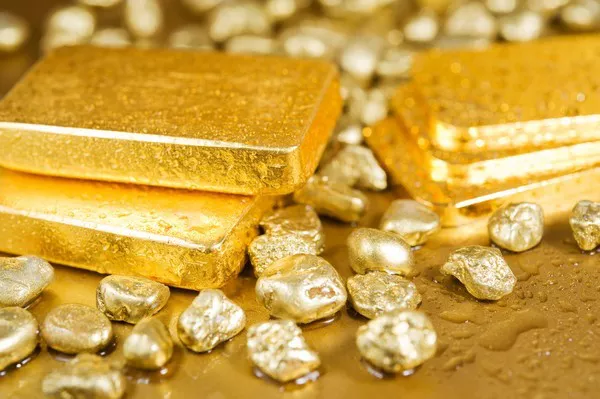Gold, the precious metal that has fascinated humanity for millennia, possesses a unique allure due to its luster, scarcity, and intrinsic value. Throughout history, gold has been used for currency, jewelry, and various other applications. However, amidst the fascination and allure, there are numerous myths and misconceptions surrounding this noble metal. One such myth is whether real gold is attracted to magnets. In this article, we delve deep into the science behind this claim, examining the properties of gold and magnets to debunk this myth once and for all.
Understanding the Properties of Gold
Before delving into the magnetic properties of gold, it’s crucial to understand the fundamental properties of this noble metal. Gold, with its atomic number 79 and symbol Au (derived from the Latin word “aurum”), is a transition metal renowned for its unique characteristics:
Chemical Stability: Gold is highly resistant to corrosion, tarnishing, and rusting, making it suitable for long-term use in various applications.
Malleability and Ductility: Gold is exceptionally malleable and ductile, meaning it can be hammered into thin sheets (gold leaf) or drawn into thin wires without breaking.
High Electrical Conductivity: Gold exhibits high electrical conductivity, making it indispensable in electronics, particularly for connectors and circuits where reliable conductivity is essential.
Dense and Heavy: Gold is dense, with a specific gravity of approximately 19.3, making it one of the densest naturally occurring elements. Its weightiness contributes to its value and makes it easily distinguishable from other metals.
The Myth: Does Gold Stick to Magnets?
One of the enduring myths surrounding gold is whether it is magnetic. The myth often arises from misconceptions or misinterpretations of experiments involving magnets and gold. The crux of the myth is the belief that real gold should be attracted to magnets, similar to how iron or steel is attracted.
Debunking the Myth
To debunk the myth, it’s imperative to understand the magnetic properties of gold and compare them with those of magnetic materials such as iron and steel:
Diamagnetism vs. Paramagnetism: Materials can exhibit different types of magnetic behavior, including diamagnetism, paramagnetism, and ferromagnetism. Diamagnetic materials, like gold, are weakly repelled by magnetic fields, whereas paramagnetic materials, like iron, are weakly attracted to magnetic fields. Ferromagnetic materials, such as iron and steel, exhibit strong attraction to magnets.
Gold’s Diamagnetic Properties: Gold is classified as a diamagnetic material, which means it generates a weak magnetic field in opposition to an applied magnetic field. This diamagnetic property is a result of the paired electrons in gold atoms, which induce a repulsive force when subjected to a magnetic field.
Experimental Evidence: Numerous experiments have been conducted to test whether gold exhibits magnetic properties. These experiments consistently demonstrate that gold does not stick to magnets. For instance, if a small piece of gold is brought near a magnet, it will not be attracted to it and may even exhibit slight repulsion.
Comparing with Other Metals: Contrary to gold, ferromagnetic materials such as iron and steel are strongly attracted to magnets. This stark difference in behavior serves as clear evidence that gold does not possess magnetic properties akin to those of iron or steel.
Factors Contributing to the Myth
Despite the scientific evidence debunking the myth, several factors contribute to its persistence:
Misinterpretation of Experiments: People unfamiliar with the principles of magnetism may misinterpret experiments involving gold and magnets, leading to the erroneous belief that gold is magnetic.
Folklore and Urban Legends: Myths surrounding precious metals, including gold, are often perpetuated through folklore and urban legends. These stories, passed down through generations, may contain inaccuracies or exaggerations that contribute to misconceptions.
Desire for Novelty: The idea of gold possessing magnetic properties may seem novel or intriguing to some individuals, prompting them to believe in the myth despite scientific evidence to the contrary.
Confirmation Bias: Individuals who believe in the myth may unconsciously seek out information or anecdotes that confirm their preexisting beliefs, reinforcing the misconception.
Conclusion: Debunking the Myth of Magnetic Gold
In conclusion, the notion that real gold sticks to magnets is a persistent myth that lacks scientific basis. Gold, with its diamagnetic properties, does not exhibit attraction to magnets and is instead weakly repelled by them. Through an understanding of the fundamental properties of gold and magnetism, coupled with empirical evidence from experiments, we can confidently debunk this myth. It is essential to rely on scientific inquiry and critical thinking to distinguish fact from fiction, particularly when it comes to cherished symbols such as gold. By dispelling myths and misconceptions, we gain a deeper appreciation for the true nature of this precious metal and the wonders of science.

